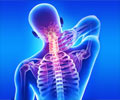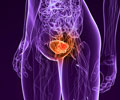Susceptibility to bladder infections is high among people who have suffered spinal cord injuries.

The study was published in the online journal PLOS ONE.
"The big deal here is the immediate effect," said V. Reggie Edgerton, a distinguished professor of integrative biology and physiology, neurobiology, and neurosurgery at UCLA and senior author of the research. "There may be a way that when people have bladder problems, you can turn the stimulator on and they can release urine at will. This strategy could have a major impact in improving the quality of life and longevity of human patients."
Nearly 1.3 million Americans have spinal cord injuries, and those with complete spinal cord injuries typically have two to six bladder infections per year. Edgerton said the advance could eventually treat or even cure one of their highest priority health concerns.
"We're not saying it will restore this part of their lives to normal, but we think it will lead to a significant improvement in quality of life," he said.
The researchers also found that after they filled a rat's bladder with saline, and turned on an epidural electrical stimulator, the rat released urine within 90 seconds, said lead author Parag Gad, an assistant researcher in Edgerton's laboratory.
Advertisement
Edgerton believes there is a connection between the neural networks that control walking and bladder function, and is planning to investigate the connection. To research bladder control with human subjects, his team plans to place electrodes on the skin over a critical part of the spinal cord and evaluating their improvement.
Advertisement
In that study, researchers used a stimulator to deliver a continuous electrical current to the participants' lower spinal cords, mimicking signals the brain normally transmits to initiate movement. The electrical current was applied at varying frequencies and intensities to specific locations on the lumbosacral spinal cord, corresponding to the dense neural bundles that largely control the movement of the hips, knees, ankles and toes. Once the signal was triggered, the men's spinal cords reengaged their neural networks to control and direct muscle movements.
"The circuitry in the spinal cord is remarkably resilient," said Edgerton, who has been conducting fundamental research in this area for 38 years and is a member of the Reeve Foundation International Research Consortium on Spinal Cord Injury. "Once you get them up and active, many physiological systems that are intricately connected and that were dormant come back into play."
Source-Eurekalert














